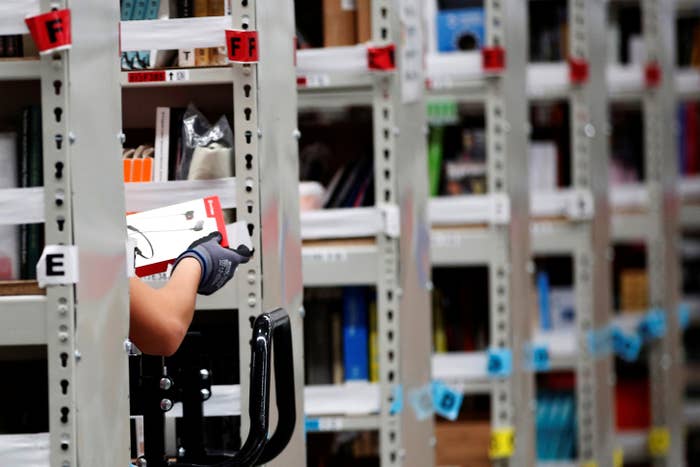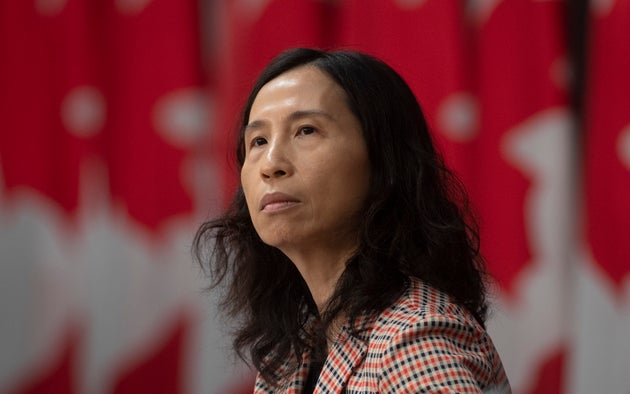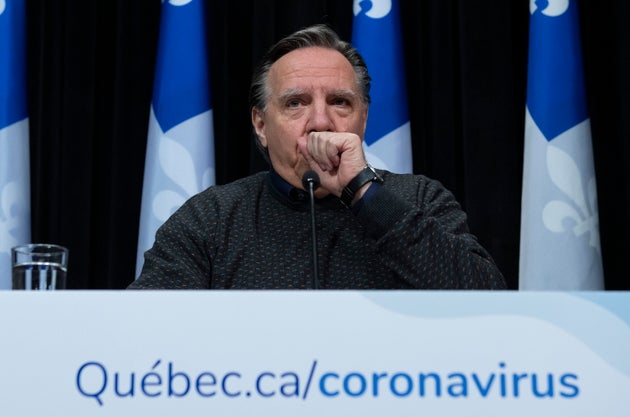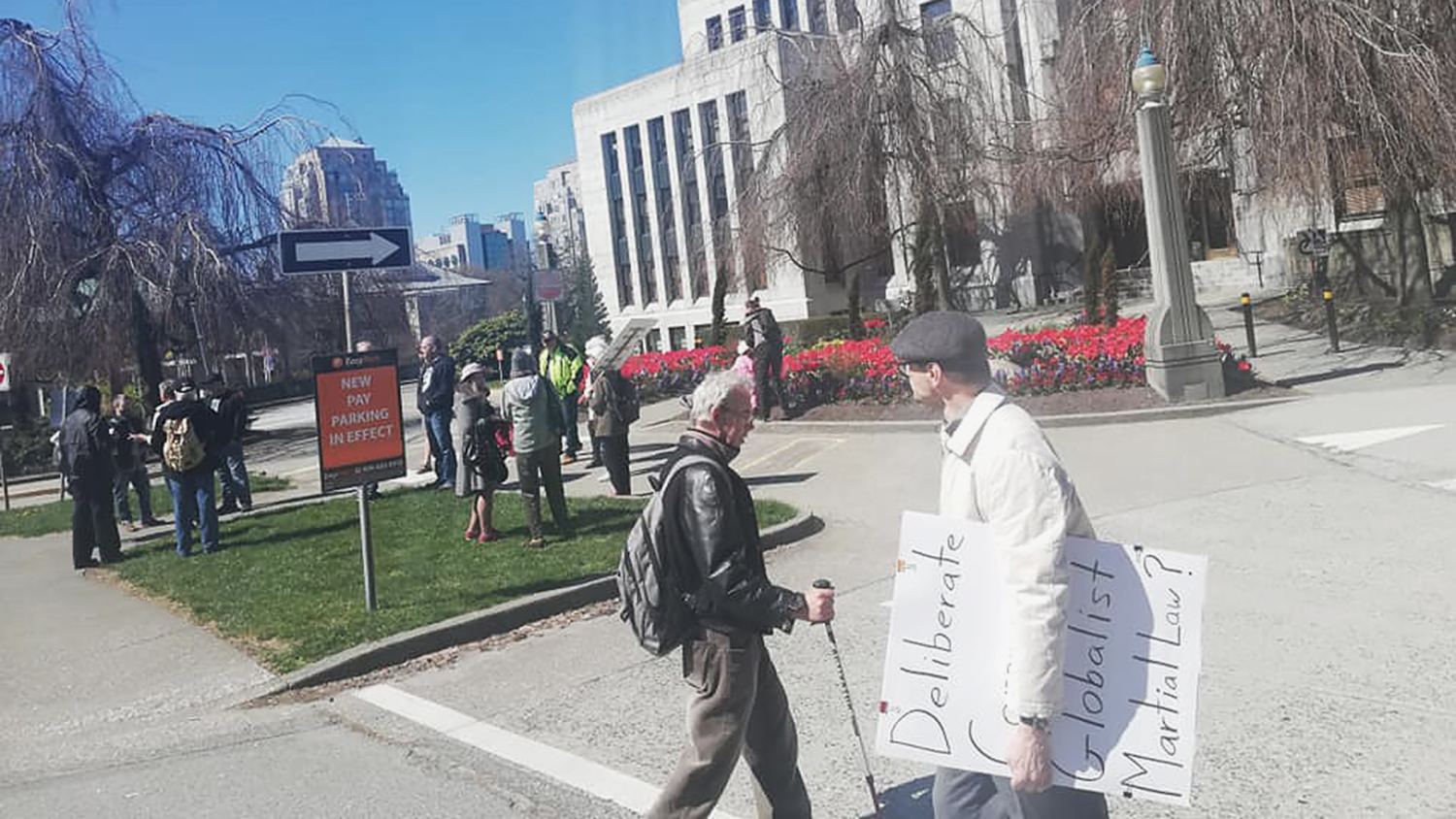Amazon’s policies around who qualifies for quarantine pay have resulted in confusion and financial hardship for affected workers. The company maintains anyone quarantined will eventually be paid.
Caroline O'Donovan BuzzFeed News April 11, 2020

Carlos Jasso / Reuters
Under increasing public pressure over its response to the coronavirus pandemic, Amazon has repeatedly said that employees “placed into quarantine” will receive up to two weeks of pay. But internal company guidelines from late last month have no provision for paying employees whose doctor has quarantined them but who have not received an official diagnosis. And Amazon workers around the country on physician-ordered quarantine because of the pandemic say they have not been paid.
In response to questions from BuzzFeed News about its payment policies for employees under quarantine, Amazon officials late Thursday evening said those March 20 documents are old and that all employees placed into quarantine by a doctor will eventually receive two weeks of full pay.
Amazon, which employs hundreds of thousands of workers in its warehouses and has seen a surge in business during the pandemic because customers can’t go to traditional stores, also said that any failure to pay employees who are at home in physician-ordered quarantine was an error.
But seven employees around the country told BuzzFeed News they haven’t been paid and can’t get answers from Amazon’s human resources department about their cases. They also report widespread confusion about the company’s policies.
One employee at a warehouse in Florida, Donna, who asked to be identified only by her first name out of fear of retaliation, said she was told by a doctor to stay home and quarantine after she developed a cough, a headache, and chest pain. Donna reported her case to her human resources manager and provided the doctor’s note. But instead of paying her, she said, her human resources manager told her to contact the company’s Disability and Leave Services team. That team did not accept her original doctor’s note. Instead, they gave her more paperwork to be filled out by a doctor. But by the time that happened, Donna was no longer sick and unable to contact her doctor, who was busy during the pandemic.
“They just ignored the [doctor’s] note, dragged it on for weeks, [and] now I can’t find a [doctor] that will fill out [the] paperwork,” she said.
Even worse, being put on a leave of absence caused her to lose a promotion she was expecting and the raise that went along with it. As the sole breadwinner in her household, she said it has been financially devastating.
“My car will most likely get repo’ed since I couldn't pay it,” she said. “I managed to use every penny to pay rent. I'm so behind in bills now. ” This week, Donna began trying to sell her collection of vintage My Little Pony dolls to raise money.
Many employees say cases like Donna’s illustrate a disconnect between Amazon’s public messaging about its policies on paid leave and what is actually happening.
In a March 11 blog post, Amazon Senior Vice President of Human Resources Beth Galetti wrote, “Effective immediately, all Amazon employees diagnosed with COVID-19 or placed into quarantine will receive up to two-weeks of pay.”
But on March 20, Amazon sent instructions to its on-site human resources employees in at least two warehouses that muddied that promise, leaving some of them confused about the company’s compensation rules during the health crisis.
Those instructions, shared with BuzzFeed News by an HR employee who requested anonymity out of concern for retaliation, said that employees quarantined by the government or by Amazon will be paid for “up to 14 days Non-Working Paid Time.” But employees who are in “physician-directed quarantine or self-isolation,” by contrast, would only qualify for two weeks of paid time off “If COVID diagnosis or presumptive.”
The two HR employees said the written policy doesn’t say whether employees who stayed home with symptoms on a doctor’s orders but later tested negative for COVID-19, the disease caused by the novel coronavirus, would get paid. It also fails to provide guidance on whether to pay someone who had symptoms but was never diagnosed either due to a shortage of tests or a doctor’s recommendation that they avoid medical facilities while contagious. Finally, it says that employees caring for a dependent or spouse who has tested positive may use vacation time but would not get paid leave.
Asked to comment on this story, an Amazon spokesperson said the March 20 documents may no longer be current and that “all Amazon employees diagnosed with COVID-19 or placed into quarantine by Amazon, a doctor or a government agency, receive two weeks of full pay.”
Jay Carney, Amazon’s senior vice president of global corporate affairs, told the New York Times on April 5 that, due to the shortage of COVID-19 tests in the United States, Amazon had ”made it clear that the additional paid time off applied to people who had suspected they had Covid.”
Still, the two HR employees who spoke with BuzzFeed News this week said they haven’t received an update regarding the policy.
Andre Matteson, who works at a warehouse near Portland, Oregon, was sent home by Amazon on March 22 with a cough and told to see a doctor before he came back. Matteson said Amazon told him he’d be paid for the time off as long as he provided a doctor’s note; he went home and called a doctor, who told him he could be having symptoms of COVID-19 and provided a note instructing him to quarantine for at least a week. His symptoms didn’t worsen and he was never tested; when he went back to work, he was told that to get paid he’d have to go home and apply for a leave of absence.
“I said, ‘You never told me that last week! You just said [to] provide you with the letter and I could return to work. I self-quarantined as you told me to do!’” Matteson said. “I still need to get paid.”
Matteson said Amazon probably owes him more than $500, but trying to get that money has so far entailed “jumping through one hoop after another.” He called Amazon’s promise to pay workers put in quarantine “really just a public relations thing.”
An Amazon HR staffer based in Missouri said there was confusion among staff about the discrepancy between the company’s public statements and the guidelines they were given on March 20.
"The original announcement ... did say if you’re quarantined or feel the need to quarantine you would get paid, but that was never adjusted internally,” that human resources employee said. “We’re answering a lot of questions [from] associates saying, ‘This is what the website says,’ and when we reached out to our management or leave teams, they were saying, ‘No, it’s not happening.’ People get really upset."
Do you have questions you want answered? You can always get in touch. And if you're someone who is seeing the impact of this firsthand, we’d also love to hear from you (you can reach out to us via one of our tip line channels).
The Families First Coronavirus Relief Act requires companies to provide two weeks of paid leave to employees quarantined by a doctor, but Amazon is exempted from that rule because it employs more than 500 people.
Many large companies whose services are in high demand during the pandemic have been adjusting their policies on the fly to adapt to changing conditions. Walmart said it will pay employees diagnosed with COVID-19 for up to two weeks but did not promise quarantine pay for those who don’t ultimately test positive for COVID-19. Lowe’s and Target have both promised 14 days paid to any employee who tests positive or is quarantined, though thousands of contract workers at Target aren’t being offered the same benefits. The grocery chain Kroger also said it would pay quarantined employees, as did BJ’s Wholesale Club, according to Business Insider. A UPS spokesperson said employees told to quarantine by a doctor due to coronavirus exposure will be eligible for paid time off; FedEx has said employees placed under “a medically required quarantine” will be paid, according to NBC News. A BuzzFeed News investigation published Friday found that many other large companies aren’t paying sick time at all during the pandemic.
According to the documents reviewed by BuzzFeed News, Amazon employees who are seeking pay while quarantined by a doctor are instructed to apply for compensation from Amazon’s Disability and Leave Services. DLS is an independent division of Amazon’s HR department that normally handles family leave for new parents and short-term disability cases. Amazon employees say the team, which was already stretched thin, has been overwhelmed by calls about the coronavirus.
“There weren’t enough of them to begin with before this happened,” said an Amazon employee at an Amazon warehouse in New Jersey. “I don't know that they were equipped to handle ... all the extra [cases].
That employee, who works in the HR department and requested anonymity to protect her employment, got sick three weeks ago and was instructed by a doctor to stay home while she waited for the results of a COVID-19 test. The test results were delayed for 10 days, but when she finally got them she was negative. Now she’s ready to return to work — but even though she herself works in HR, she isn’t sure whether she’ll be paid for the two weeks during which she stayed home without pay. “I’m having trouble getting into contact with the leave team,” she said. “They sent me one email and then no one responded.”
An Amazon warehouse associate in Hazleton, Pennsylvania, is also struggling to get a response from the company after being out on quarantine for three weeks. The employee, who requested anonymity, went to a doctor with symptoms three weeks ago. She provided Amazon HR with a note from her doctor instructing her to stay home. On March 25, her COVID-19 test results came back negative. But she hasn’t been back to work, because Amazon HR placed her on unpaid leave and she hasn’t yet been able to reach anyone in human resources to get permission to return to work.
“They were suppose[d] to call yesterday again and still haven’t,” she said on Thursday evening. In the meantime, she said, “I can’t pay my mortgage, my car loan, my car insurance, my other bills,” or afford food for “my two little girls.”
Experts say that people who don’t get paid sick time are more likely to come to work even if they feel sick or a doctor told them not to, which could contribute to the spread of the pandemic. For that reason, they recommend that workers told to stay home get paid.
“If that person isn't being paid, they have an incentive to break the quarantine and expose others to infection,” said Lawrence Gostin, director of the World Health Organization Collaborating Center for National and Global Health Law. “From a public health perspective, anyone in a medical quarantine should be paid because they are clearly unable to come to work due to potential infectiousness.
“When it comes to infectious diseases, it is important for companies to have liberal paid sick leave [policies] because you don't want to encourage a culture of presentee-ism in which sick workers come to the workplace, potentially spread the infection, and are not optimally productive because they are sick,” said Amesh Adalja with the Johns Hopkins University Center for Health Security.
The Missouri-based HR staffer said she’s particularly worried about at-risk workers in her facility. “It definitely concerns me as an HR person,” she said. “We have a lot of older population that works for us. If they’re trying to make ends meet ... of course they’re still going to come in. They’re going to do whatever they need to do to pay the bills.”
The New Jersey–based Amazon HR employee echoed that concern. “People need to be paid now or they’re going to keep coming to work and risk making other people sick,” she said.
A California-based driver who works for an Amazon contractor called Shipmates told BuzzFeed News that he also hasn’t been paid for the two weeks he stayed home after his doctor told him his symptoms were consistent with COVID-19. At the time, he assumed he could apply for pay to cover that leave from the $25 million Amazon Relief Fund the company announced on March 11, because a fact sheet he received about the program said that "the Fund will focus on qualifying individuals in the U.S. who have been quarantined for or diagnosed with COVID-19."
But now his application for pay has been denied, and Amazon’s website currently says that delivery drivers who ship packages for its third-party contractors, as well as independently contracted Flex drivers, would be eligible to apply for two weeks of paid leave from the Amazon Relief Fund “if diagnosed with COVID-19 or placed into quarantine by the government or Amazon.” As the driver was quarantined by a doctor and tested negative, he said, he fears he’s not eligible for the fund and can’t get answers.
Going on two weeks without pay, the driver said he’s had to negotiate with banks and insurance providers to extend due dates for student loan and car payments and isn’t sure how he’s going to pay his cellphone bill this month.
“Amazon made it seem like they would take care of me, and they’re not doing that,” he said.
There are currently at least 70 Amazon facilities where an employee has tested positive for COVID-19, according to research by the Athena coalition, a group of organizations focused on issues related to Amazon. News reports say one warehouse in Staten Island may have as many as 25 positive diagnoses.
Meanwhile, customer orders have spiked at Amazon as retail stores have temporarily shuttered and people on lockdown are going online to order household goods and food. Amazon’s challenge is to keep up with these orders even as attendance rates on some shifts have fallen as low as 53%.
To entice people to come to work, the Missouri-based HR associate said management in her building is hosting raffles, offering free, prepackaged snacks, and sharing positive comments from customers. “We’re supposed to post them for the associates to see that what they're doing is needed and essential,” she said.
The company is also taking steps to make sure employees who may be contagious are sent home so they can’t infect coworkers. When employees test positive for COVID-19, Amazon uses a combination of video surveillance and its package-scanning system, which tracks workers’ movements throughout a warehouse, to determine which employees have come into “close contact” with infected workers and inform them of their exposure. Amazon said it asks those people to stay home and pays them for up to 14 days.
According to employee screening documents provided to Amazon HR staff on March 20 and reviewed by BuzzFeed News, Amazon employees who are exhibiting symptoms of COVID-19, including a fever or a sore throat, are asked to go home and use vacation pay if they have it— but if an employee reports that a family member has tested positive for COVID-19, “the associate does not need to be sent home at this time.” HR managers should “encourage” employees to “remain at work as long as they are symptom-free.”
It was unclear whether this was still the policy. Amazon has said policies put in place three weeks ago may no longer be current, but it has not provided details.
Until this week, the CDC had recommended that workers exposed to the coronavirus stay home. But on Wednesday evening, the CDC issued an update on its safety guidelines for “critical infrastructure workers” who’ve been exposed to the coronavirus. This new guidance says that workers who’ve been exposed to someone with a confirmed or suspected case of COVID-19 may continue reporting to work “provided they remain asymptomatic and additional precautions are implemented to protect them and the community.” Those precautions include temperature checks, 6 feet of social distancing, wearing a mask, and disinfecting “offices, bathrooms, common areas, shared electronic equipment routinely.”
Amazon instituted temperature checks last week and began distributing masks to warehouse employees this week. The company also said it’s experimenting with disinfectant fogging, spraying disinfectant to kill any virus that may be in the air. Amazon has said it’s working to enforce social distancing in its warehouses, but employees say the nature of the work, layout of the buildings, and number of workers on shift at a time make it difficult to stay 6 feet away from each other at all times.
At the Missouri facility, the company has also closed access to lockers and staggered shift start times to prevent workers from concentrating in crowded places. But the building runs 24 hours a day, and the cleaning crew only has an hour and a half in the afternoon to work without associates present. An HR employee there said she worries it’s not enough.
“It’s a pacifier,” she said. “It’s ‘Yes, we’re protecting you — but ... we’re not really doing anything.’ It’s meant to make you feel more comfortable so you can come to work.”
She said no one at her building so far has received quarantine pay, which she said is confusing given what Amazon has said publicly.
“It’s a lot of frustration for us as HR,” she said. “There's nothing we can do.”
Despite The New Coronavirus Law, Workers At These Big Companies Say They Still Must Work Sick Or Lose PayAlbert Samaha · April 10, 2020
Amazon Will Give Partial Pay To Employees It Sends Home With Fevers During The Coronavirus PandemicCaroline O'Donovan · April 7, 2020
Some Amazon Employees With Fevers Are Being Sent Home Without PayCaroline O'Donovan · April 2, 2020
As More Amazon Employees Contract The Coronavirus, Workers Are Walking Off The JobCaroline O'Donovan · March 31, 2020
They Work Inside Target Stores — With Fewer Coronavirus Protections Than Target EmployeesKatie J.M. Baker · April 9, 2020
Amazon Will Give Partial Pay To Employees It Sends Home With Fevers During The Coronavirus PandemicCaroline O'Donovan · April 7, 2020
Some Amazon Employees With Fevers Are Being Sent Home Without PayCaroline O'Donovan · April 2, 2020
As More Amazon Employees Contract The Coronavirus, Workers Are Walking Off The JobCaroline O'Donovan · March 31, 2020
They Work Inside Target Stores — With Fewer Coronavirus Protections Than Target EmployeesKatie J.M. Baker · April 9, 2020
Coronavirus In The Workplace:
BuzzFeed News looks at how companies and employees are handling the coronavirus pandemic.
As More Amazon Employees Contract The Coronavirus, Workers Are Walking Off The Job
Amazon Said That During The Pandemic, Sales Are Soaring. Workers Say They Feel Unsafe.
These Retailers Have Been Staying Open. Employees Say They’re Afraid For Themselves And Others.
Starbucks Employees Got Sick. Starbucks Stores Stayed Open.
Costco Made Corporate Staff Come To The Office. An Employee Died Of COVID-19. The Office Is Still Open.
 Caroline O'Donovan is a senior technology reporter for BuzzFeed News and is based in San Francisco.
Caroline O'Donovan is a senior technology reporter for BuzzFeed News and is based in San Francisco.
As More Amazon Employees Contract The Coronavirus, Workers Are Walking Off The Job
Amazon Said That During The Pandemic, Sales Are Soaring. Workers Say They Feel Unsafe.
These Retailers Have Been Staying Open. Employees Say They’re Afraid For Themselves And Others.
Starbucks Employees Got Sick. Starbucks Stores Stayed Open.
Costco Made Corporate Staff Come To The Office. An Employee Died Of COVID-19. The Office Is Still Open.
 Caroline O'Donovan is a senior technology reporter for BuzzFeed News and is based in San Francisco.
Caroline O'Donovan is a senior technology reporter for BuzzFeed News and is based in San Francisco.









